Media | Articles
Original Owner: An Early Mustang Convertible Is Still Making Memories for the Same Family
April 17 marked 60 years since the Ford Mustang’s public debut at the 1964 New York World’s Fair. The original pony car immediately became a pop-culture and automotive phenom, and it remains one of the most impactful cars in history. We’re celebrating with stories of the events surrounding the Mustang’s launch, the history of the early cars, and tales from owners. Click here to follow along with our multi-week 60 Years of Mustang coverage. -Ed.
The old candy wrappers, soda can pull-tab, and crumpled Bazooka bubble gum comic stuffed into the dashboard ashtray of Jon Stroud’s Rangoon Red 1965 Mustang convertible would likely earn disapproving frowns from car show judges. As the old saying goes, though, “One man’s trash is another man’s treasure.” In this case, the odd bits of trash help unlock a 50-plus-year treasure chest of memories of the car’s original owners, Stroud’s parents.
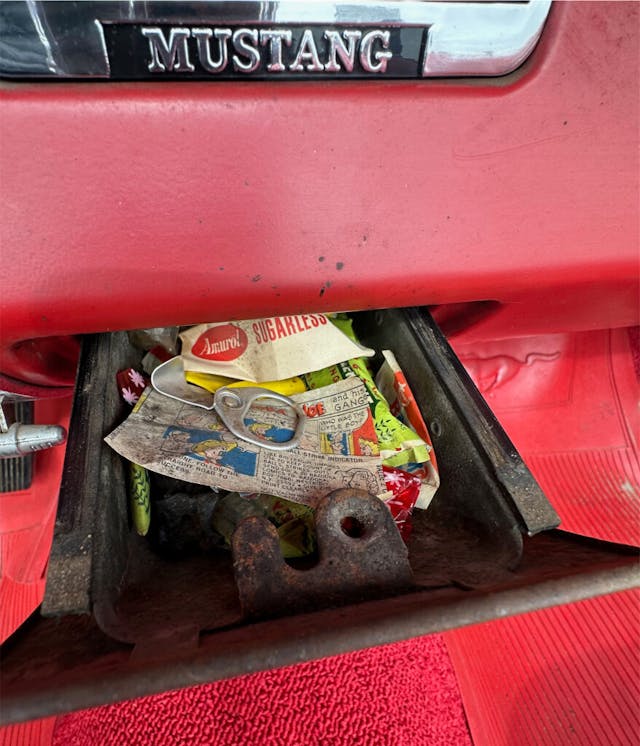
“Dad smoked a pipe and cigarettes, loved to drink Pepsi, and chewed a lot of gum in the car,” Stroud recalled for Hagerty. “He could change out his pipe tobacco during one stop light. That was talent.”
The assorted detritus was in the ashtray in 1999, when Stroud trailered the Mustang from his parents’ home in Kokomo, Indiana, to his home near Charleston, South Carolina. Both now 82 years old, Richard and Doll Stroud bought the convertible new in August 1964, and Richard used it as a work commuter in three states until 1978. By then, salt used on Indiana’s roads in winter had fueled undercarriage corrosion.


Richard attempted to start repairing the body in his garage but ultimately realized the job would require a professional’s touch. The car would wait 20 years to get it. Once the work was completed, he called Jon to say that he and Doll were moving to a new home in Kokomo, and to ask Jon if he still wanted the Mustang.
Marketplace
Buy and sell classics with confidence
Born three years after the Mustang rolled off the line, and in love with it since he was a young boy, Jon did not hesitate with his answer. His bond with the car was established early. “I came home from the hospital in my mother’s arms, in the front seat, because back then they didn’t have protective child seats,” he said. Once he got it to South Carolina, though, the Mustang would mostly sit for yet another 20 years.

“Between starting a family, building a real estate business, getting that business through a recession, and putting two daughters through college, I could never really afford to do anything more on it,” he said. “We finally started the process of getting it back on the road in 2021, and it’s been on the road about two years now.”
Jon gave the Mustang’s mechanicals some major upgrades, including a 302-cid crate motor and automatic overdrive transmission. The changes suited his use of the iconic convertible, which is more than a weekend toy.
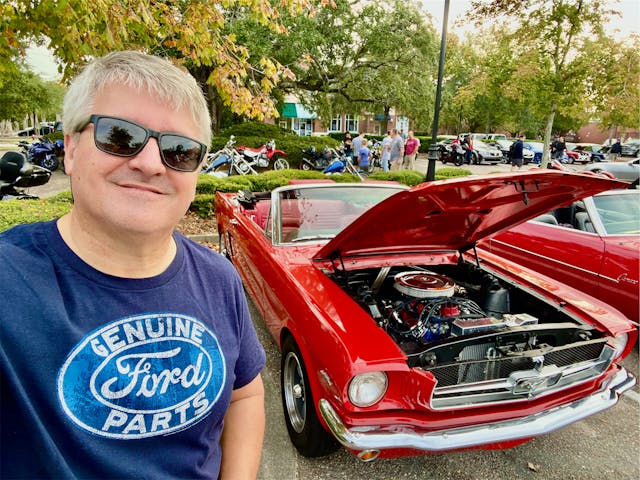
“I drive her at least once a week during the spring, summer, and fall, and I take the Mustang to some of my appointments. I don’t drive it long distances, mostly within 10 or 15 miles. My grin is usually so big, I could eat a banana sideways.”
That sentiment is very much what his father felt about the car 60 years ago.
Love at First Sight
Like millions of Americans in 1964, Richard Stroud fell in love with the Mustang at first sight. He had seen photos and TV coverage of the car from its World’s Fair introduction, as well as the torrent of media coverage that followed the car from there.
In August 1964, he spotted a newspaper ad for Saunders Ford in Raleigh, North Carolina, inviting readers to come see the Mustang. He and his wife drove the 80 or so miles from Greenville in their 1956 Chevy Bel Air convertible and found a festive atmosphere when they arrived.
“There was a parade going down the street, and the red Mustang convertible was sitting out front with other new Fords,” Richard said. “It knocked me out. I thought it was the most beautiful car, and I still think it is.”

Richard spoke to a salesman, a man he recognized from his original hometown, Ayden, NC. Despite plans to just look at cars that day, the young couple bought the Mustang on the spot, just a few weeks shy of their one-year wedding anniversary.
“I didn’t know how we were going to pay for it, but I just really wanted it,” Richard said.
Although the original sales documentation has been lost through numerous moves over the decades, Richard remembered paying $3289 for the car, making $69 monthly payments for two years. At the time, he was earning about $10,000 a year working for DuPont.
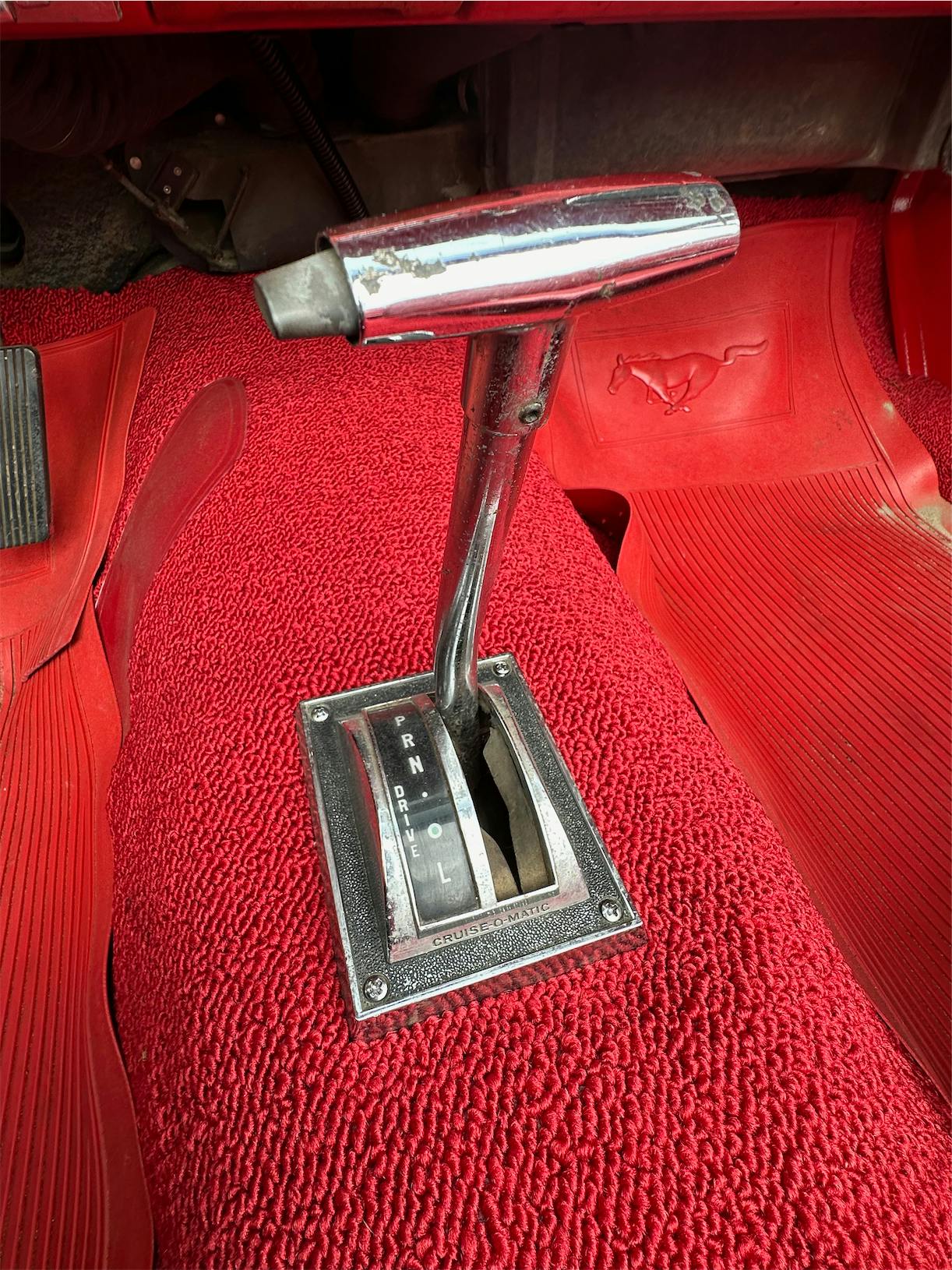
The Mustang came equipped with the optional 260-cid V-8 and three-speed Cruise-O-Matic automatic transmission. The car’s trim tag also verifies the color and the April 8th build date at the assembly plant in Dearborn, Michigan. Since Mustangs were selling before even reaching dealerships, it is possible this one remained a dealer demonstrator until the Strouds bought it.
“It certainly got a lot of attention when it was new,” Richard said.
Factory Basics: 1965 Mustang 260 V-8
The Strouds’ Mustang was made one month after production started, and in the eyes of Mustang buffs, that makes it a “1964.5.” All first-year Mustangs were officially 1965 models, but this unofficial term distinguishes those built before an August transition that ushered in numerous changes on the assembly lines. (To meet much higher demand than originally anticipated, Ford switched its St. Louis plant to augment Dearborn production in June 1964, and the Metuchen, New Jersey, plant switched to building Mustangs in early 1965).
Mechanically, Ford juggled the engine lineup, with the K-code High-Performance 289 the only engine option to carry over to the second-phase ’65s. A 200-cid inline-six replaced the 170, and a 289 two-barrel replaced the 260 two-barrel as the first-level V-8 upgrade. All engines now used an alternator instead of a generator.

The 260 would be the one thing about the Mustang that disappointed Richard.
“I’d driven a friend’s ’65 with the Hi-Po 289 with a four-speed, and boy, did I ever want one. I got on it and was going 80 before I even realized it,” he said.
The 260-powered convertible would have been lucky to do 0–60 in about 11 seconds. The cast-iron V-8, known as the “Fairlane” engine, was compact and light at about 450 pounds. Its 164-horsepower rating was, as common then, an SAE gross figure. True net output might have been around 120 hp.
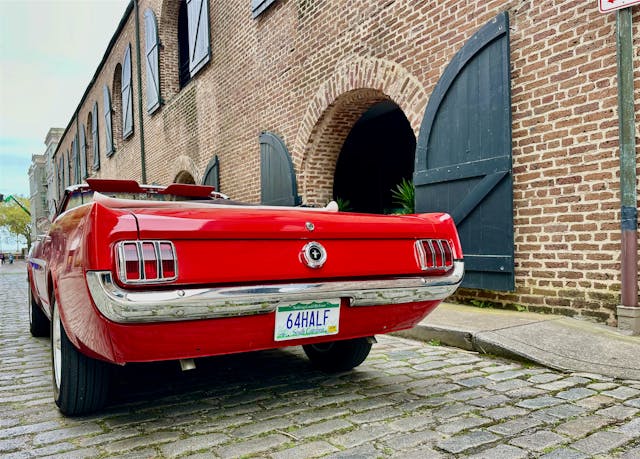
In the 1970s, Richard tried a little drag racing with the Mustang, but even installing a better ignition and a new intake with a four-barrel carb failed to give the pony car much more gallop. “The real problem was that Ford used finishing nails for valves … I mean, that engine couldn’t breathe!” he said.
For the record, valve size for the 1963–64 260 V-8 was 1.67 inches for intake and 1.45 for exhaust. To make the Mustang at least look a little racier, Richard painted the hood matte black, mimicking the 1969 Mustang Mach 1.
Frequent Flyers
Richard’s Mustang became a mover in a different sense, accompanying the Strouds as they relocated a few times for job changes. The Mustang made the 80-mile roundtrip from Greenville south to a DuPont facility in Kinston, before the family moved to Snow Hill when Doll took a job with the county. Richard later transferred to Seaford, Delaware, to work in the electronics section of DuPont.
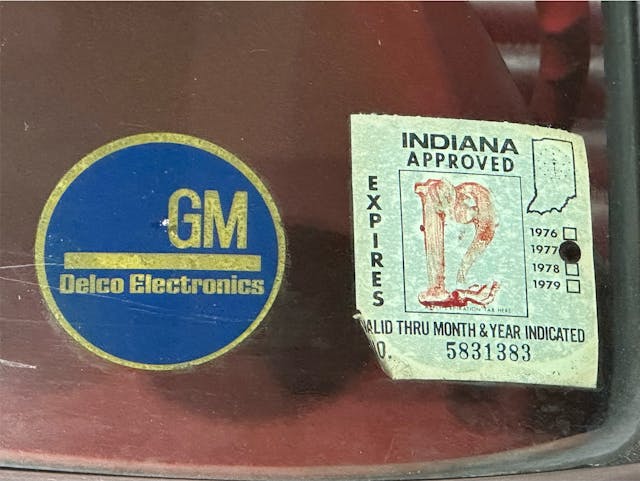
In 1969, with Jon two years old, the Strouds relocated to Kokomo, where Richard worked for Delco Electronics Corporation, a General Motors subsidiary at the time. He commuted with the Mustang for the next nine years. A second son, Michael, was born that year.
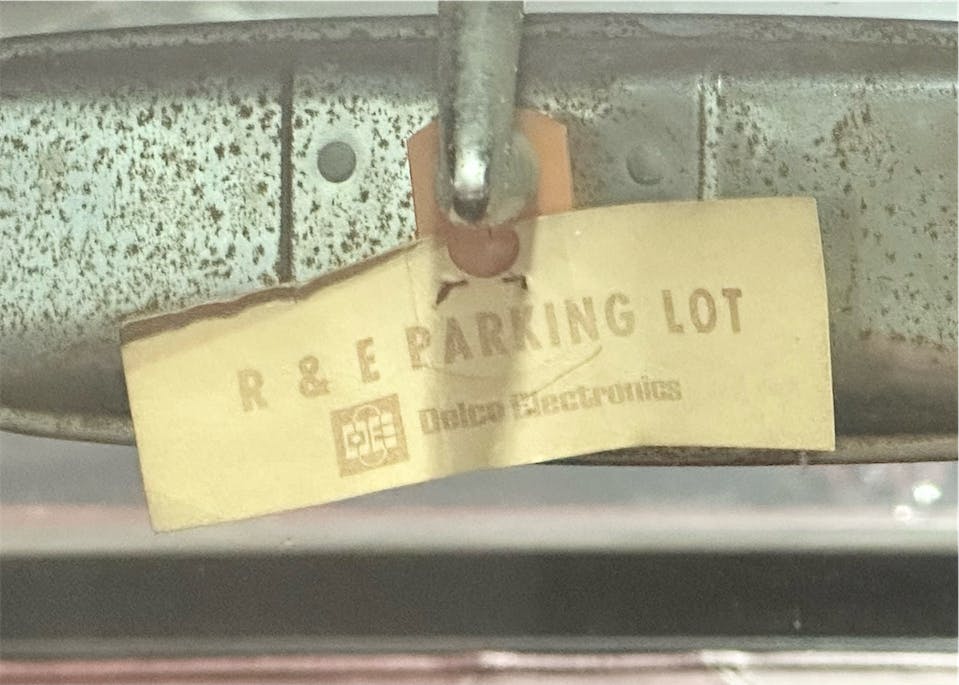
“The boys would of course ride in the back, but the car did not come with seat belts,” Richard said. “So, I installed seat belts in the front and the rear.”
Packing the car for long family trips to visit grandparents in North Carolina required another modification. “The trunk was quite small, so I put a rack on the trunk lid to carry the spare tire,” Richard said. “We went back and forth between Kokomo and North Carolina many times with that configuration.”
By 1978, winter road salt had taken such a heavy toll on the Mustang’s undercarriage and rear quarters that Richard parked it in the garage, with about 125,000 miles on the odometer. As a replacement commuter, he bought a beater 1966 Mustang hardtop with the 200-cid six and three-speed stick.
“My brother and I called the ’66 a ‘Rustang,’ because we could see the road going by through holes in the floor on both sides,” Jon recalled. “I remember my dad losing first and reverse gears and having to put his foot out the door so he could push the car down the driveway backwards. At work, management suggested to Dad that he could lose out on promotions until he drove GM cars. I’m sure that ’66 went straight to the crusher.”
40-Year Journey Back to Health
Richard’s attempt at fixing up the Mustang in the late ’70s did not last long.
“I was a do-it-yourselfer, so I tried a little sandblasting to get it to where I could paint it, but I just wasn’t making much progress.”
He recalled that the car’s side rails were still good, but the convertible-specific center reinforcement plate was beyond repair. Richard realized he was in over his head. The car would remain off the road until 1998, when he brought it to a man in Kokomo who had restored a few classic Mustangs.
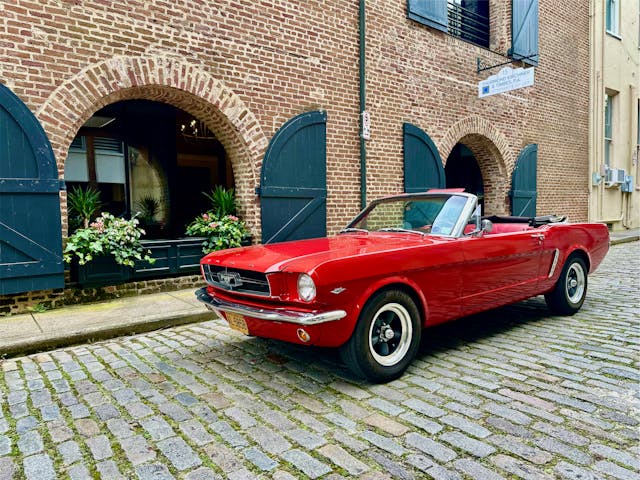
“He did a fantastic job,” recalled Richard. “He repaired the undercarriage and cut the rear quarter panels all the way up to maybe two inches below the top and welded in new panels. He restored and painted the body beautifully.”
After its transfer to Jon in South Carolina, the Mustang would get another long rest before hitting the road—and this time, with much more gusto. Sadly, Jon’s brother passed away in 2012 at age 42.
Pony Express
Jon had a shop in Charleston swap out the tired 260 for a 302-cid crate motor with electronic fuel injection, and a Ford four-speed automatic overdrive transmission replaced the Cruise-O-Matic. The original engine and transmission went into storage. The 302 makes a stout 250 horsepower, or about twice the net output of the original 260 V-8, and the The transmission makes the Mustang a calmer and more efficient highway cruiser, revving around 1500–1600 rpm at 70 mph.
“I didn’t go with a super high-performance engine, because I wasn’t interested in burning the tires,” Jon explained.

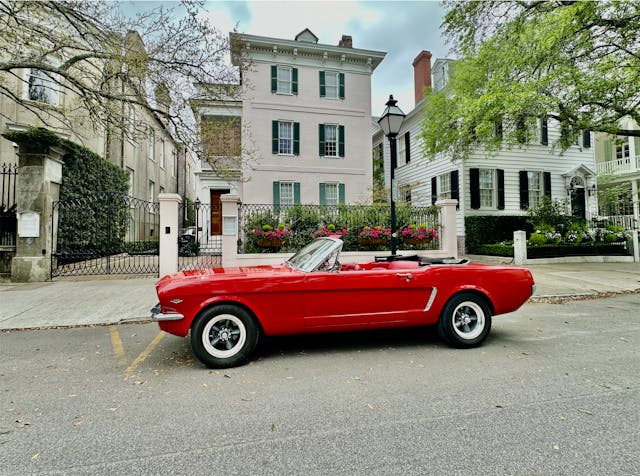

The same shop refreshed the suspension and brakes and installed a set of American Racing 15×7-inch Torq Thrust D wheels.
The Mustang retained its original dash and steering wheel, with some wear and cracking. Here, too, there are memories embedded in the weathered surfaces. Jon bought correct replacement carpeting and had a pro install it.
Making New Memories, Rekindling Fond Ones
In its new life in South Carolina, the Mustang has been bridging generations while revving up new memories.
“Two years ago, my dad got to ride in the Mustang for the first time since 1978,” Jon said. “I took him to a car show in Mount Pleasant when he was here for Thanksgiving. Once the word got out that he was the original owner, a crowd gathered. Dad said one of the things he enjoyed the most about that day was that he was an absolute rock star. Everyone wanted to hear him talk about that car.”

At a different car show, Jon noticed another Rangoon Red ’65 Mustang convertible. “It had a 289 and automatic. I checked the VIN and saw it was four numbers ahead of mine. So that car was on the line the same day.”
Every drive brings reminders of the car’s specialness. “At almost every stop light, someone tells me about ‘the one that got away’ or a ‘my uncle’s cousin’s dog’s nanny had one,'” he said.

Home buyers in the Charleston area may recognize the Mustang from seeing it parked in front of Jon’s listings, and he sometimes includes the car in photo shoots.
“I sent my dad a photo of the Mustang parked in front of a beautiful home, and he said, ‘Oh, she’s still a beauty.’ So, I replied, ‘You missed the home behind it!’ Then Dad said, ‘I guess the Mustang just overshadowed the house.’”
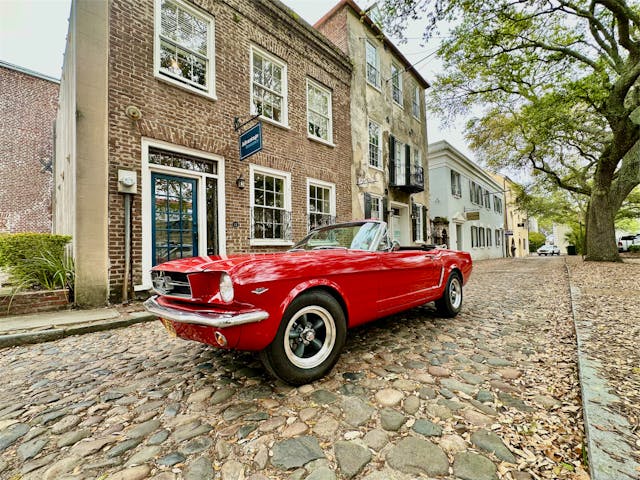
For Jon, the Mustang is a 50-plus-year-old dream come true, one that bundles priceless childhood memories.
“When I was a boy in Kokomo, every day we left the house to go to school we’d leave through the garage, so I saw that car every day. After Dad had put it in the garage and tried sand-blasting, pretty soon stuff started piling up on top of it. But every day I’d think to myself, ‘One day, I’m going to drive that car.’ Now, every time I go down to my own garage, I get to look at her and smile. It just makes me happy.”
__
Car: 1965 Ford Mustang convertible
Owner: Jon Stroud
Home: Mount Pleasant, South Carolina
Delivery Date: August, 1964
Miles on Car: ~130,000
Are you the original owner of a classic car, or do you know someone who is? Send us a photo and a bit of background to tips@hagerty.com with ORIGINAL OWNER in the subject line—you might get featured in our next installment!
***
Check out the Hagerty Media homepage so you don’t miss a single story, or better yet, bookmark it. To get our best stories delivered right to your inbox, subscribe to our newsletters.
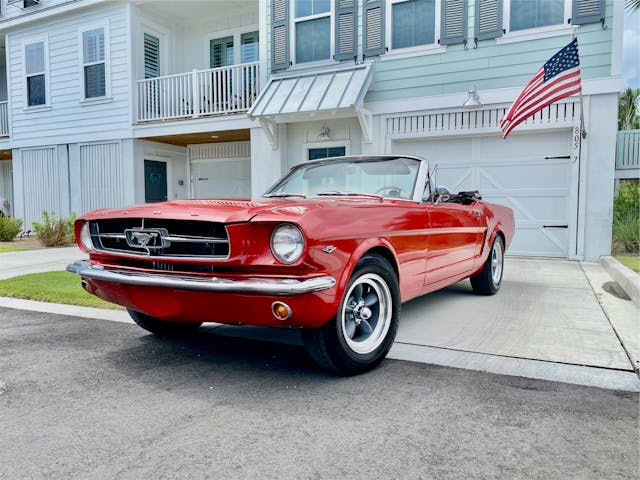



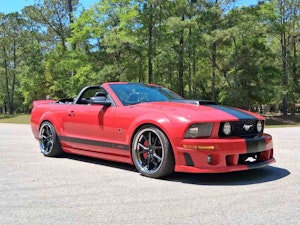

























Gotta say, all these stories are pulling my heart, my dads not into cars a smidge, but I’ve always wanted something for him and I to bond over
Very cool story.
Thank you for the wonderful article. Jon – I love how you chose to preserve the Mustang, and all of the important items (Delco parking pass, full ash-tray etc.) that are most meaningful – it is stunning and couldn’t be in better hands. On a side note: My grandmother also worked at (and retired from) Delco in Kokomo at the same time that your dad worked there – I’d like to think that they may have known each other. I still travel to Kokomo regularly to visit family. Hope you and your dad share many more memories with the Mustang!
Love the story. I can relate to the dad seeing the car before seeing what else was in the background. I do the same thing.